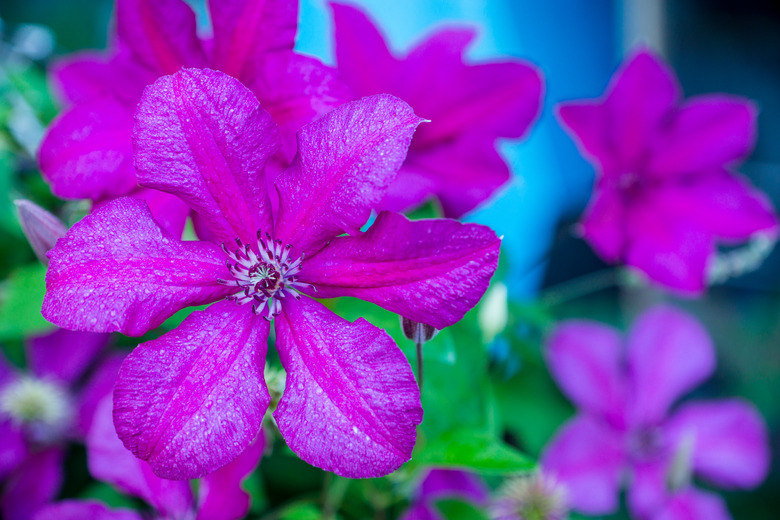How To Care For Clematis
If you're an avid gardener, you may know that clematis plants (Clematis spp.) are considered to be one of the prettiest and most popular flowering vines featured in a garden. The plants can have woody vines or be very lush and have many herbaceous and evergreen varieties.
If you'd like to grow a clematis plant in your garden or need to know how to care for one, it's important to understand that there are many species with different flowering forms, colors, blooming seasons, and hardiness traits. Generally, clematis is hardy in USDA plant hardiness zones 3 through 9, depending on species and cultivar. If grown correctly, they'll be a beautiful addition to your garden or patio, but they need to be looked after and treated with care.
What Is Clematis?
What Is Clematis?
Clematis is a group of ornamental vines that generally grow on a vertical plane. Some of the traditional cultivars of clematis include Jackmanii (zones 4-8), General Sikorski (zones 4-8), Henryi (zones 4-8) and Comtesse de Bouchaud (zones 4-9). If you want to grow clematis in your garden, you have to consider a variety of things. You'll want to know the mature height of the clematis, the flower form and the color. If you have room, some clematis vines can grow 10- or 20-foot vines. If you don't have space, you can get a smaller version that will thrive in a small garden or a pot on the patio.
Standard Size of a Clematis
Standard Size of a Clematis
The usual flower size of clematis is a large blossom with about six to seven petals. Many flowers measure approximately 4 to 6 inches across, although the four-petaled white blossoms of sweet autumn clematis (Clematis terniflora, zones 5-9) are only 1 inch in diameter. Clematis can also produce double blossoms and bell-like flowers. Bloom colors range from white to a wine-red shade, pink, lavender to deep purple and even yellow.
How Long Does it Take for Clematis to Grow?
How Long Does it Take for Clematis to Grow?
If you're looking for a fast-growing plant, you should know that it will take a couple of years for the clematis vine to fully mature. This includes the flowers. If you want to cut down on the time it takes for the clematis vine to fully mature, you need to buy a clematis that's at least two years old. When you purchase the plant, it should be robust because that shows that the plant is growing strong.
How to Grow a Clematis
How to Grow a Clematis
Clematis roots and vines are very fragile, and they won't recover well if roughly treated. If you're starting out with a young clematis that you want to plant in the ground, you need to carefully remove it from the nursery pot and dig a hole as deep as the root ball. If you're growing clematis in a container, you'll want to use at least a 5-gallon pot, or one that's at least 12 inches in diameter. The plant doesn't like to be too dry or too wet, so you'll want to make sure that it gets just the right amount of water. Clematis roots like to be cool and shaded, which a 2-inch layer of mulch provides.
Fertilize the plant at the beginning of the season, as soon as the ground thaws, and again in summer, with a balanced fertilizer. The plant will sometimes get scraggly stems, so make sure to prune them. These plants bloom at different times, depending on species and cultivar, so make sure to read the label and properly prune your specific clematis. Clematis vines prefer locations where they can get about six hours of sun. When they're first planted, they need something to support them, so you can use a pole for smaller growing clematis vines or arbors for larger vines.
